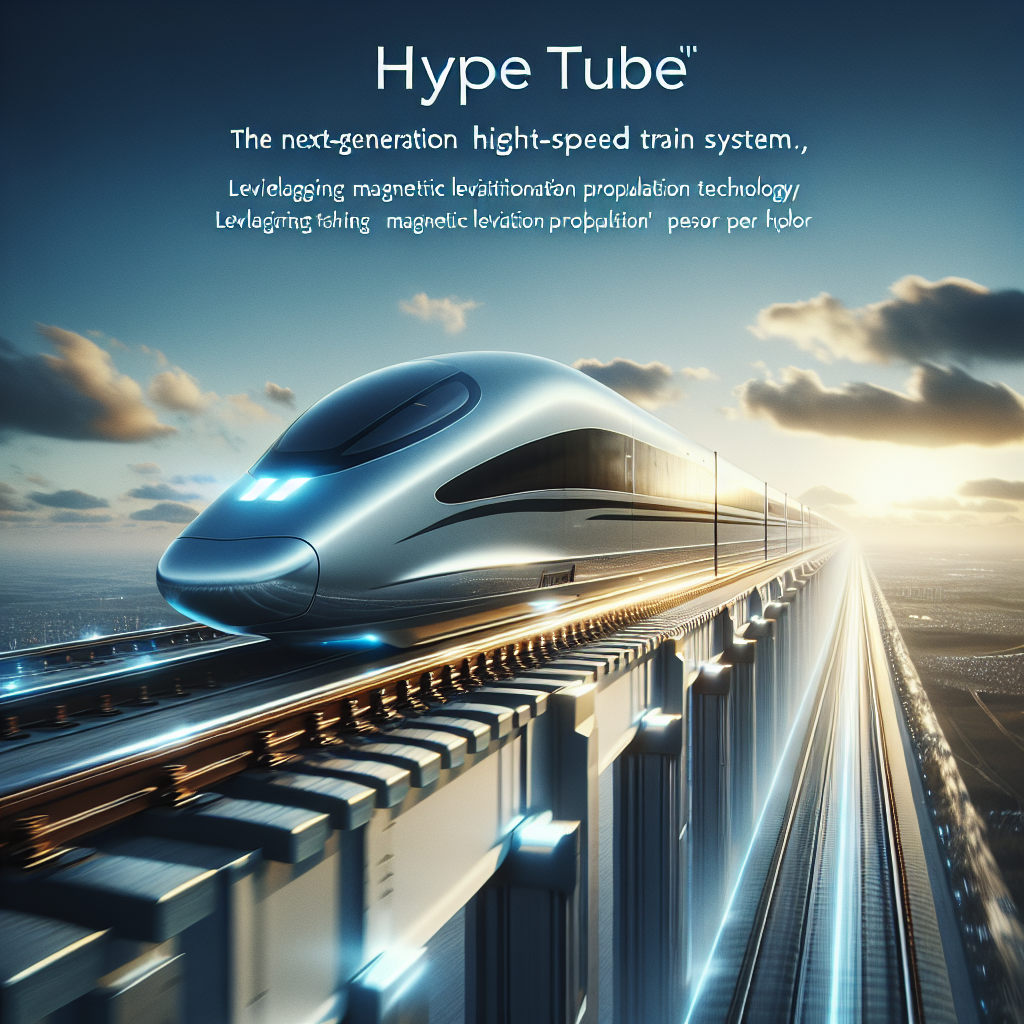On April 9th, the South Korean government announced that it will start developing magnetic levitation propulsion technology to create the next-generation high-speed train system called the “Hypertube.” Once this train is operational, it is expected to reach speeds of up to 1,200 kilometers per hour, reducing the travel time from Seoul to Busan to less than 20 minutes.
According to reports from Yonhap News Agency, the South Korean Ministry of Land, Infrastructure and Transport is collaborating with the Korea Railroad Research Institute to lead the research and development of the Hypertube system. This system aims to use magnetism to levitate the train and propel it through low-pressure tubes, significantly cutting down travel time.
The focus of this development project will be on core technologies such as electromagnetic propulsion systems, precision control mechanisms, and high-speed transportation vehicle bodies.
In theory, the Hypertube could reach speeds of 1,200 kilometers per hour when running at full speed, reducing the travel time between Seoul and Busan (approximately 320 kilometers apart) to just 16 minutes and 15 seconds, about one-seventh of the time needed by the current KTX high-speed train (1 hour and 52 minutes).
The Ministry of Land, Infrastructure and Transport stated that this project is expected to continue until 2027, with a total budget of 12.7 billion Korean won (approximately 8.54 million US dollars), of which 36.8 billion Korean won is allocated for 2025.
The official website of South Korea highlights that the Hypertube is a future transportation system designed to operate in a near-vacuum tube with air pressure ranging from only 0.001 to 0.01 atmospheres. The train will utilize magnetic levitation technology and achieve super-high-speed operation through electromagnetic forces between the tracks.
Due to the low air pressure and minimal air resistance inside the tube, this type of train has the potential to achieve a top speed of 1,200 kilometers per hour. Not only is it faster than airplanes, but it is also more environmentally friendly and less affected by weather conditions.
Yoon Jin-hwan, Director of the Railway Bureau at the Ministry of Land, Infrastructure and Transport, mentioned that this technology will help narrow the urban-rural gap, address the crisis of provincial disappearance resulting from unbalanced regional development and population decline. He also expressed hope to export the relevant technology in the future to lead the global railway competitive market and expand to various regions worldwide.
According to reports from the Central News Agency of Taiwan, the Korea Railroad Research Institute has been conducting research and development on the Hypertube since 2009 and completed a scaled-down model test in 2020. The model achieved a speed of 1,019 kilometers per hour in a near-vacuum state. However, the project faced setbacks in 2022 and 2023 due to insufficient preliminary research on core technology development.
In order to further shorten domestic travel times, the South Korean Ministry of Land, Infrastructure and Transport has officially begun the development of the Hypertube system, with completion expected by 2027.
(Click here to view the explanatory video provided by the Korea Railroad Research Institute)

